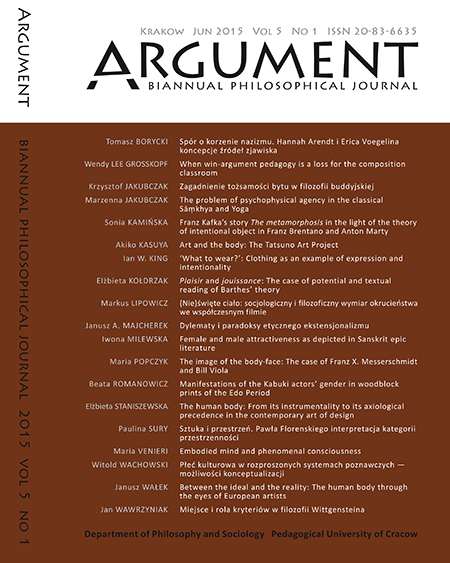Between the ideal and the reality: The human body through the eyes of European artists
Keywords:
European painting, image of human body, body in art, idealization of human bodyAbstract
The human body has always been one of the most important subjects for European artists. But the way it is displayed in art has varied in different epochs. In ancient Greece, a canon was constituted that proclaimed an ideal vision of the body, derived from the rules governing the universe. This idealization of the human body, neglected in the Middle Ages, was re-established in Renaissance and Classicist art. However, Renaissance artists also created another image of the human body by borrowing from patterns mainly found in nature, and started to depict their models not in an ideal but rather in a more natural shape. The new non-ideal forms of art that appeared in Mannerist art made the artists develop a much wider artistic language, which brought into being a variety of individually interpreted artistic representations of the human body. It preceded similar phenomena which became widespread in the twentieth century. Thus, the human body was not always displayed in art as strong, healthy and beautiful. On the contrary, the martyred bodies of Christ and the saints, as well as the depictions of aged, tired or ill people, also carried enormous artistic expression. A distinct problem has occurred with the ways in which corpses have been presented in art. The review concludes with a reference to the contemporary trend called Body-Art that involves various artistic activities, such as happenings and performances, where the human body is itself used as a significant work of art.


